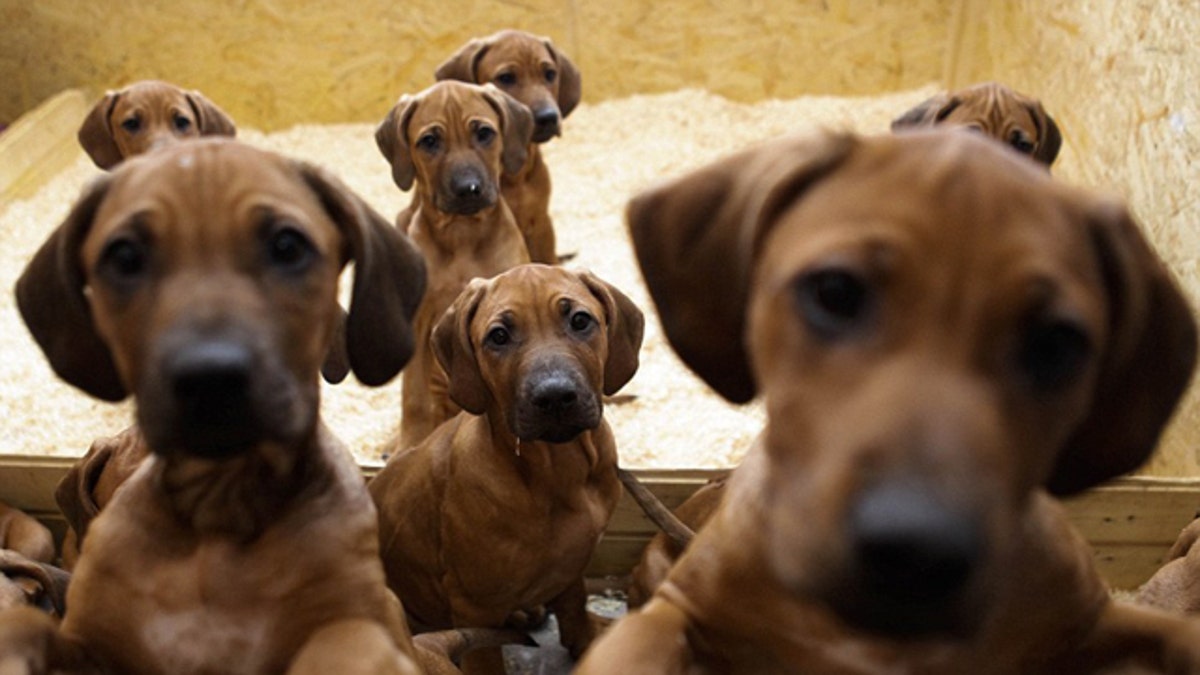
Ramona Wegemann's dog Etana gave birth to eight female and nine male puppies on Sept. 28 in Ebereschenhof, which is near Berlin. (AP)
Have you ever wondered whether your pooch is trying to tell you something by giving you puppy dog eyes?
Well, scientists believe that our canine friends really are attempting to communicate using that pout or those irresistible pleading eyes.
Researchers found that dogs raise their eyebrows when they are looked at, a mechanism which makes their eyes appear bigger.
But the clever clogs canines won't do the same when handed food - suggesting their brow waggling is more than just excitement and could be an attempt to tell us something.
There is plenty of evidence that primates adopt facial expressions when they are in front of an audience.
But there has been little research into how our pets might be manipulating us using their eyes and facial movements.
Experts at the University of Portsmouth found that dogs produced significantly more facial movements when being watched than not.
They increased the frequency of certain expressions as a way of communicating.
This included puppy dog eyes, unromantically described as movement AU101, which was used more when being watched by a person.
This was because dogs know it can bring them what they want, study lead Professor Juliana Kaminski and her colleagues concluded.
Writing in the study, which was published in Scientific Reports, Prof Kaminski stated: "Another possibility is that the AU101 lets the eyes of the dogs appear bigger and more infant-like.
"Regardless of the exact mechanism, it seems that humans are particularly responsive to this facial movement in dogs.
"Increased production of this movement in response to human attention could benefit dogs in their interaction with humans, therefore."
The team tested 24 different breeds of dogs including German Shepherds, Golden Retrievers and mongrels.
They were observed while interacting with a human demonstrator facing them, with their back to them and with or without food.
It has been a big week for dog research in the science world.
In addition to learning of their potentially manipulative ways, scientists have also discovered that our beloved pets know when we are afraid and that it, in turn, makes them feel fear too.
Biagio D’Aniello of the University of Naples discovered that pooches exposed to fear smells (formed in our sweat) showed more signs of stress than those exposed to happy or neutral smells.
This story was originally published in The Sun.
